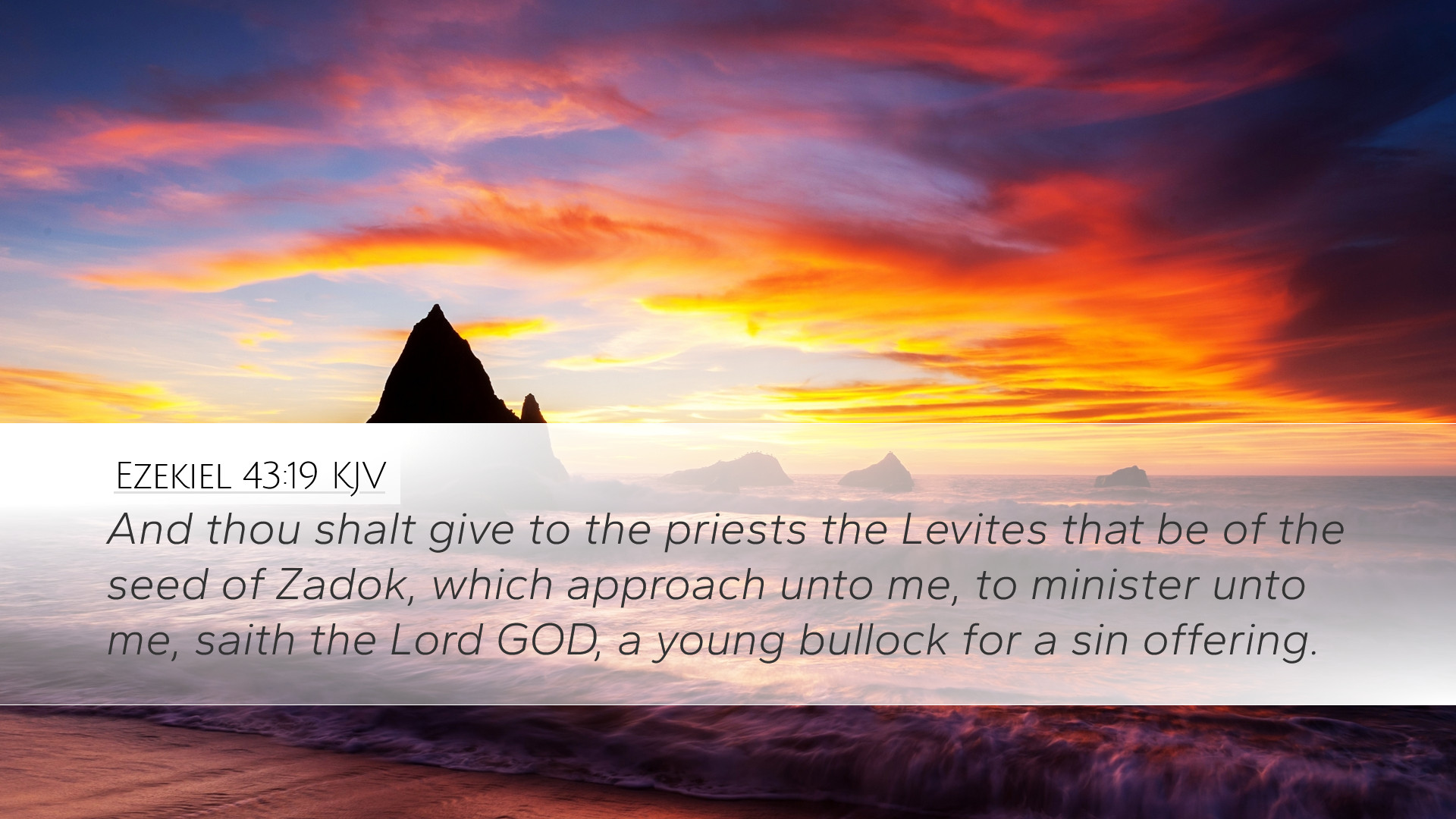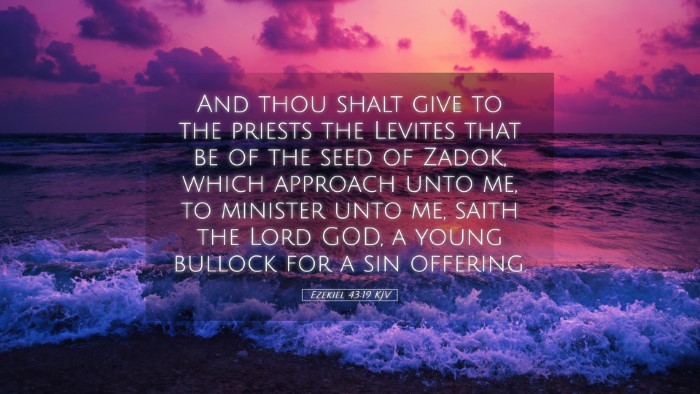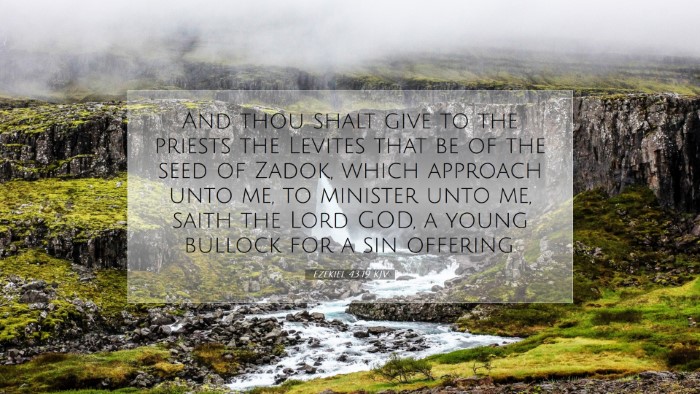Ezekiel 43:19 Commentary
Verse: "And thou shalt give to the priests the Levites that be of the seed of Zadok, which approach unto me, to minister unto me, saith the Lord GOD, a young bullock for a sin offering."
Contextual Overview
This verse is part of a larger vision given to Ezekiel regarding the future temple and its rites. The context centers around the restoration of worship in Israel, emphasizing the centrality of proper sacrifice and priestly duties in maintaining a relationship with God.
Interpretation and Significance
The early chapters of Ezekiel, especially from 40 onward, depict a detailed vision of the new temple, which serves as a metaphor for God's renewed presence among His people. Here, the focus shifts to the priesthood and the sacrificial system.
The Role of the Zadokite Priests
The reference to the "seed of Zadok" highlights the significance of this particular line of priests, who had remained faithful to God during Israel's unfaithfulness. Public domain commentaries shed light on several important aspects:
- Faithfulness: Matthew Henry emphasizes that the Zadokites exemplified loyalty to Yahweh amidst apostasy, marking them as deserving of special honor in the new temple.
- Sacred Duty: Adam Clarke notes that these priests are entrusted with direct service to God, indicating a transition from previous priestly lines that had compromised their duties.
- Sin Offering: Albert Barnes points out the importance of the sin offering as a means for atonement, signifying the serious nature of sin and the need for purification in returning to divine favor.
Implications for Worship and Sacrifice
The instruction to offer a young bullock for a sin offering serves multiple purposes:
- Symbolism of Innocence: The bullock represents purity and innocence. In trades of sacrifice, only the best is used to signify the seriousness of atonement.
- Restoration: This act symbolizes the restoration of relationship between God and His people. As Matthew Henry notes, offerings were not merely ritual acts, but expressions of repentance and need for reconciliation.
- Covenantal Reminder: Adam Clarke reminds us that the sacrificial system reflects God's covenantal nature, continually inviting them to return to Him through acts of faith and obedience.
Theological Reflections
This verse raises several theological considerations about the nature of sin and God’s redemptive plan:
- Atonement: The need for a sin offering points to the ongoing necessity for atonement, which believers in Christ understand through His ultimate sacrifice.
- Holy Worship: The emphasis on proper worship underscores the call for holiness in how we approach God, prompting reflection among pastors and theologians on the gravity of liturgy.
- Inclusivity of Priesthood: The specific mention of the Zadok lineage may also invite discussions on ecclesiiastical authority and the roles within modern church structures, guiding contemporary practices.
Practical Applications
In the light of Ezekiel 43:19, several practical applications can be discerned:
- Faithfulness in Ministry: Current church leaders are reminded of the need for faithfulness in their calling, much like the Zadokite priests.
- Approaching God: The proper approach to God that includes recognition of sin and reliance on Christ for atonement should shape the liturgy of worship services.
- Cultivating Holiness: The church must foster an environment where holiness is valued and pursued, reflecting the dedication required of those who lead God's people.
Conclusion
Ezekiel 43:19 serves as an important reminder of the seriousness of sin and the divine call to holiness in worship. The faithful Zadokite priests illustrate a legacy of righteousness that is essential for restoring the relationship between God and His people. In examining this text through the lens of historical commentaries, modern readers—pastors, theologians, and scholars alike—are called to walk faithfully in their priestly duties, living lives that reflect God's holiness while continually recognizing the need for atonement through Christ.


